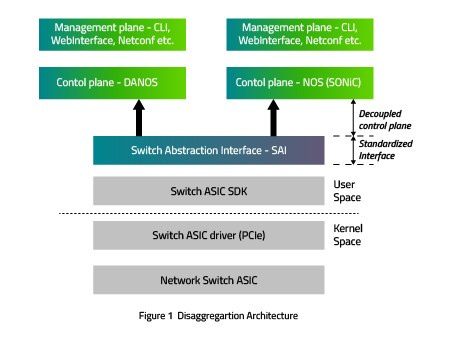The technology landscape has evolved radically in the last few years and virtualization has been a Godsend to organizations that are looking to drive down their capital and operational expenses while being able to respond to market needs much faster. Interestingly though, while Computing and Storage have progressed leaps and bounds from tapping into the potential of Virtualization, it is only now that Networking seems to be catching on in a major way.
Owing to the massive growth in user traffic due to ubiquitous “digital transformation” occurring across various industries, Global Communications Service Providers are buckling up to improve customer experience by addressing this DEMAND for data with large scale investments in network scalability.
Currently, network elements and their associated applications are based largely on proprietary hardware and managed independently with various layers of software. This creates a number of challenges in terms of network complexity, manageability, security, and an upsurge in operational costs.
The Networks are Virtual but the Challenges are Real
It goes without saying that there is a massive uptick in the number of organizations that are making long-term investments in the cloud. However, we’re still in a transitionary phase as we move towards a reality that is increasingly “software defined” – whether it be networks or the underlying infrastructure. As we make this transition, there are a few critical challenges associated with managing complex heterogeneous virtual networks — some of these are:
- a) Limited availability of highly skilled Cloud resources
- b) Choice of Technologies and comprehensive end-to-end testing
- c) Security concerns due to perceived vulnerability
For the purposes of this article, I would like to explore the second point in greater detail and provide further insight into formulating the right testing approach for network virtualization.
NFV and SDN to the rescue
As enterprises continue to migrate to the cloud, new age technologies like Network Function Virtualization (NFV) and Software defined Networking (SDN) have been increasingly adopted to resolve most of these challenges mentioned above.
Largely physical or box-centric networks incur huge capex and also involve proprietary hardware, time consuming deployment cycles and frequent obsolescence — all of which are addressed effectively by Network Function Virtualization. NFV involves virtualizing network functions and hosting them on a virtual Infrastructure consisting of hypervisors or containers, which are generally built on COTS servers.
Software Defined Networking (SDN) is centered around the idea of providing a centralized view of the network along with ensuring optimized management by creating distance between two crucial elements — the controlling plane and the forwarding plane.
Network Function Virtualization necessitates a fundamental shift in Network Design and Testing
Over the last couple of decades, Networking has been primarily hardware centric but there is now a paradigm shift from hardware-focused implementation to an integrated hardware and software cloud-centric approach. The journey to network virtualization requires a fundamental shift in the way the new age Network is designed & tested.
There are newer testing challenges popping up due to factors arising from multi-vendor software, protocols and APIs inter-operating in this environment.
One good practice to be adopted before designing a new testing approach would be to look deeply at the critical dependencies in designing an SDN or NFV solution. However, while migrating from an existing network to a virtual network, both networks have to be re-validated thoroughly.
Developing an Integrated Testing approach that delivers value
To tap into the benefits offered by disruptive technologies such as SDN and NFV, it is critical to have an integrated testing approach that is based on 3 key tenets viz Vertical Layer Testing Approach, Test automation framework and DevOps.
The Vertical Layered approach consists of four layers created to deliver a virtualized network for deploying Services anywhere anytime across the NFV-Infrastructure layer, Virtual Network Functions (VNF) layer, the Management & Network Orchestration (MANO) layer integrated to the existing OSS/BSS system. This new approach brings in specific test focus points at each layer. Some of the important test focus areas are mentioned below:
- NFVI — vCompute, vStorage, vNetwork with hypervisor focused on IoT, performance and scale, security, disaster management and redundancy
- VNF — Functionality of the specific VNF, Service Chaining, VNF life cycle Management, elasticity, security — DDoS, ACL, packet filtering etc.
- MANO — Resource pools, alarms, SW provisioning, catalog and multi-tenancy scenarios
- SDN / Network Layer — Functionality, Interoperability, API Integration and Security
The second tenet would be to define automation goals and identify a suitable test automation framework preferably one that is open source and is used in various ETSI NFV initiatives. This would ensure a higher level of re-use and garner greater support from the community by leveraging common components. Based on practical experience, there will be a need to create several keyword libraries for the various deployment use cases to make it more reliable. It’s pretty clear that an end to end test framework is necessary to ensure repeatability and regression apart from covering all the test scenarios incorporating CLI, API and GUI components.
The last tenet embraces the idea of DevOps to ensure continuous integration and testing. With an array of virtual elements, associated network functions and multi-vendor software, a well-defined DevOps approach integrated with the right test framework is essential to create, build, test and deploy the various software components in an agile, automated, quick, efficient, time bound and service oriented manner to mitigate risk.
Integrated Testing — the bedrock of a successful SDN and NFV rollout
Testing is a critical success factor for SDN and NFV deployment. Therefore, a well thought-out integrated testing approach that is based on industry best-practices and is developed over time through proven expertise provides the much-needed predictability and assurance required for a successful SDN and NFV rollout. Adopting a multi-layered and integrated approach provides significant benefits related to early detection of bugs, improved test cycles through automation, predictability of outcomes, increase in confidence levels, enhanced scalability, improved security guidelines and adequate testing to ensure smooth delivery.
Network Virtualization demands a complete re-thinking in the testing approach — an integrated and layered approach for SDN — NFV is of immense importance in ensuring operational effectiveness and successful transitioning to a virtualized network environment.
This article by Jason originally appeared on BetaNews.com

is general manager of Product Engineering Services at Happiest Minds Technologies. He is responsible for defining and leading Test Engineering solutions in the area of Datacenter Technologies specially focused on SDN and NFV technologies. Jason is also responsible for embedded and Systems and device related technologies associated with Internet of Things and Industrial Automation. He has over 24 years of experience in Telecom, Datacom, Networking and IoT product development and testing working across Network Equipment Provider, Telecom Service Provider, Hi-Tech and Manufacturing customers with specialization Networking and Testing, QA. Before, Happiest Minds, Jason has held multiple senior roles in Large PES organizations based in India and did work stints in US and Europe.







